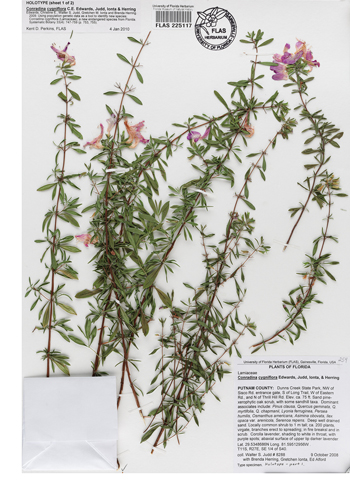APPS SPECIAL ISSUE CALL FOR PAPERS:
“Advances in Plant Imaging across Scales”

Applications in Plant Sciences (APPS), the Botanical Society of America’s (BSA) open access journal highlighting new tools and protocols across the plant sciences, is organizing a special issue titled “Advances in Plant Imaging across Scales.”
Imaging has long been important across many areas of plant science, with applications in areas including cytology, histology, anatomy, and development. However, recent advances in imaging technologies are revolutionizing our views of plants – from ecosystems to chromatin. For example, rapid imaging of herbarium specimens has yielded over 35 million freely available and downloadable images from iDigBio, providing new opportunities for taxonomy, systematics, and morphology, to name a few. Moreover, when coupled with machine learning approaches, these images of herbarium specimens can be used to score phenology across space, time, and species. Satellite and LiDAR images are providing unprecedented views of landscapes, with opportunities to study land use, forest tree diversity, photosynthetic productivity, phenology, and much more. Computed tomography scanning, developed for the study of both skeletal features and soft tissues in vertebrate natural history specimens and with applications to neurobiology, is now being applied to plant tissues, including novel approaches for rehydrated flowers from herbarium specimens. At the subcellular level, new techniques have been developed for visualizing chromatin structure for the study of genome organization and gene evolution.
In light of these advances, the goal of this special issue is to explore how new imaging technologies are enabling novel research into plant form and function, genomics, ecology, and evolution. The issue will highlight novel imaging and image processing techniques targeted to plants at any scale of organization. We are interested in topics that include:
- Protocols for visualizing chromosomes and DNA structures
- New tools and techniques for visualizing plant anatomy, including microscopy and scanning approaches
- Herbarium specimen and fossil imaging and processing
- Low-cost, high-throughput approaches for imaging of plant phenotypes in the field or the greenhouse
- Novel approaches for utilizing and analyzing landscape/ecosystem-scale images from satellite, LiDAR, and drones
- Software or pipelines for processing large image databases
- Comprehensive reviews and comparisons of imaging techniques or image processing
How to submit: Authors interested in contributing to this special issue should email a proposal consisting of a tentative title, proposed author list, and a 200–300-word abstract to the APPS editorial office (apps@botany.org).
The deadline for proposal submission is August 5, 2022. Proposals will be reviewed by the Editor-in-Chief and the special issue editors. Authors will be notified by August 19, 2022, as to whether their proposal was accepted.
The Botanical Society of America and its publications are committed to inclusive science that reflects disciplinary, human, and geographic diversity. Submissions are welcomed from applicants of all ethnicities, races, colors, religions, sexes, sexual orientations, gender identities, socioeconomic status, national origins, disabilities, ages, or other individual status.
Authors whose proposals are accepted should submit their manuscript by January 15, 2023. Note that acceptance of a proposal does not guarantee the eventual acceptance of the manuscript, as all manuscripts will be rigorously peer-reviewed and held to the standards of the journal. The target date for publication of the special issue is the second half of 2023.
Article publication charges are being underwritten by iDigBio.
For more information about journal scope, article types, and manuscript preparation, please see the Author Guidelines. Any questions may be sent to the APPS editorial office (apps@botany.org).
Best wishes,
Dr. Gil Nelson (Florida Museum of Natural History, University of Florida)
Dr. Pamela Soltis (Florida Museum of Natural History, University of Florida)
Special Issue Editors
Image caption: Herbarium specimen of Conradina cygniflora from FLAS, downloaded from iDigBio. This image is the holotype for this species, a rare endemic mint from northern Florida, discovered in the past 15 years and named in 2009. Image credit: University of Florida Herbarium, Florida Museum of Natural History.